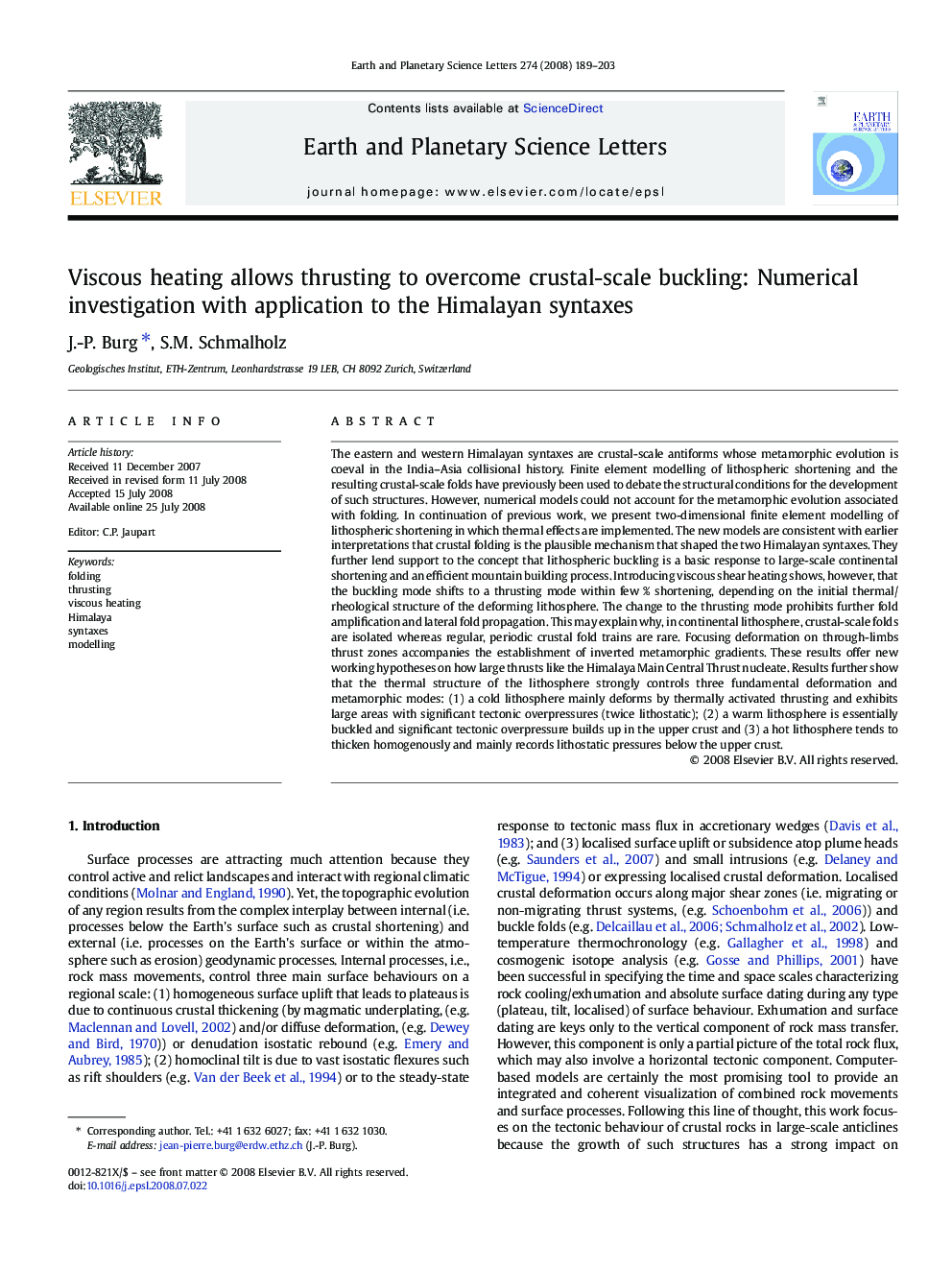| کد مقاله | کد نشریه | سال انتشار | مقاله انگلیسی | نسخه تمام متن |
|---|---|---|---|---|
| 4679394 | 1634888 | 2008 | 15 صفحه PDF | دانلود رایگان |

The eastern and western Himalayan syntaxes are crustal-scale antiforms whose metamorphic evolution is coeval in the India–Asia collisional history. Finite element modelling of lithospheric shortening and the resulting crustal-scale folds have previously been used to debate the structural conditions for the development of such structures. However, numerical models could not account for the metamorphic evolution associated with folding. In continuation of previous work, we present two-dimensional finite element modelling of lithospheric shortening in which thermal effects are implemented. The new models are consistent with earlier interpretations that crustal folding is the plausible mechanism that shaped the two Himalayan syntaxes. They further lend support to the concept that lithospheric buckling is a basic response to large-scale continental shortening and an efficient mountain building process. Introducing viscous shear heating shows, however, that the buckling mode shifts to a thrusting mode within few % shortening, depending on the initial thermal/rheological structure of the deforming lithosphere. The change to the thrusting mode prohibits further fold amplification and lateral fold propagation. This may explain why, in continental lithosphere, crustal-scale folds are isolated whereas regular, periodic crustal fold trains are rare. Focusing deformation on through-limbs thrust zones accompanies the establishment of inverted metamorphic gradients. These results offer new working hypotheses on how large thrusts like the Himalaya Main Central Thrust nucleate. Results further show that the thermal structure of the lithosphere strongly controls three fundamental deformation and metamorphic modes: (1) a cold lithosphere mainly deforms by thermally activated thrusting and exhibits large areas with significant tectonic overpressures (twice lithostatic); (2) a warm lithosphere is essentially buckled and significant tectonic overpressure builds up in the upper crust and (3) a hot lithosphere tends to thicken homogenously and mainly records lithostatic pressures below the upper crust.
Journal: Earth and Planetary Science Letters - Volume 274, Issues 1–2, 30 September 2008, Pages 189–203